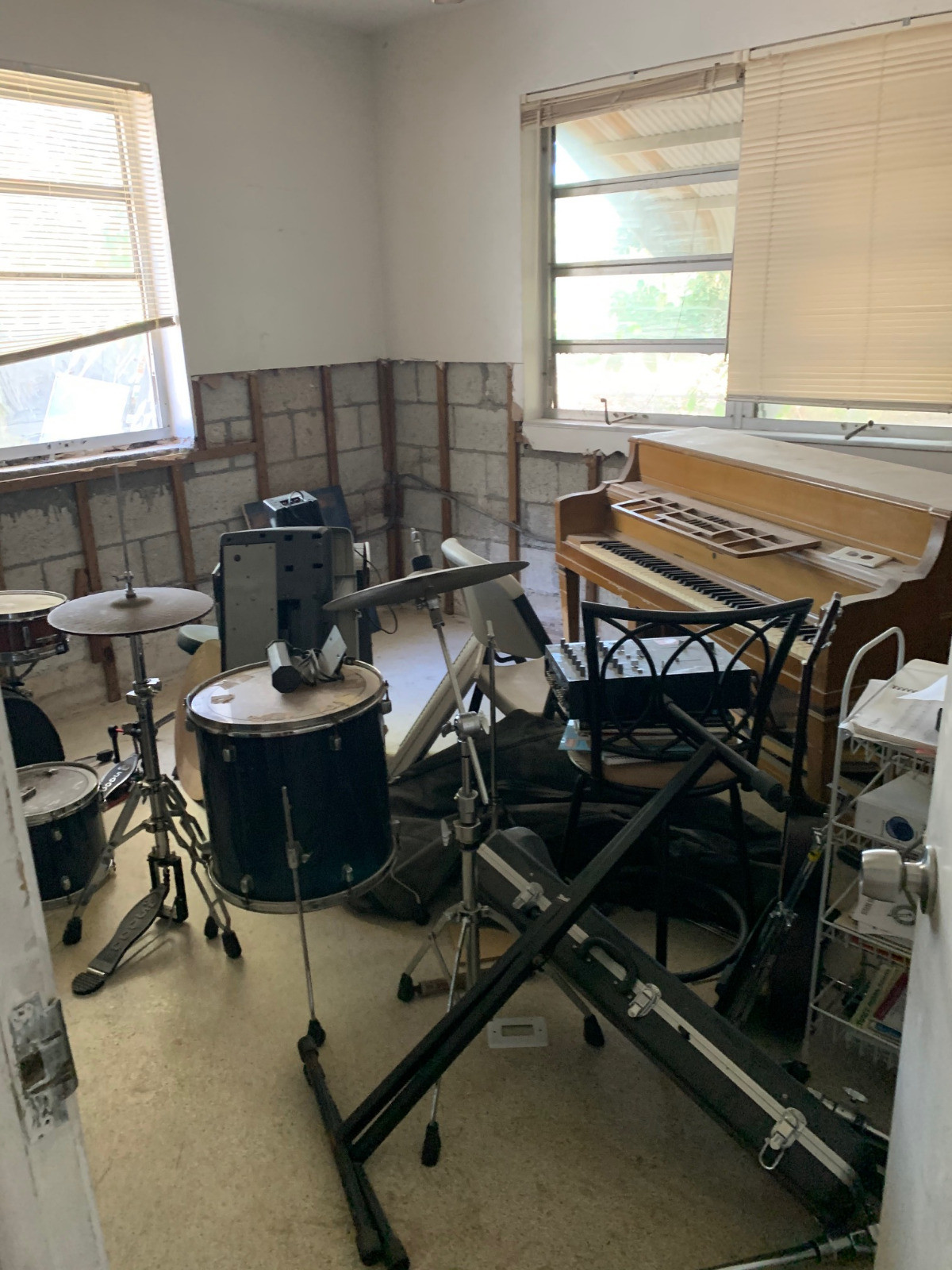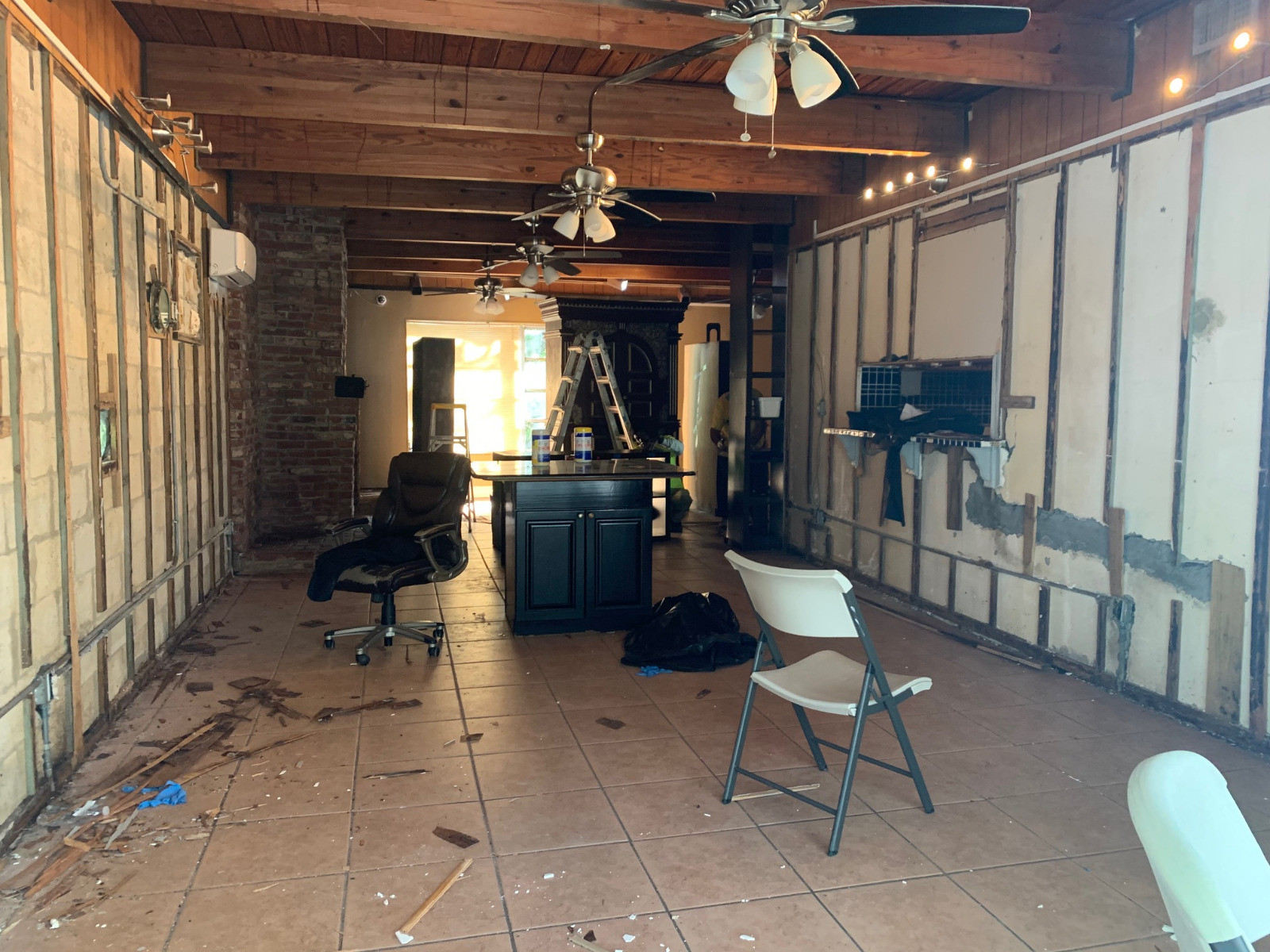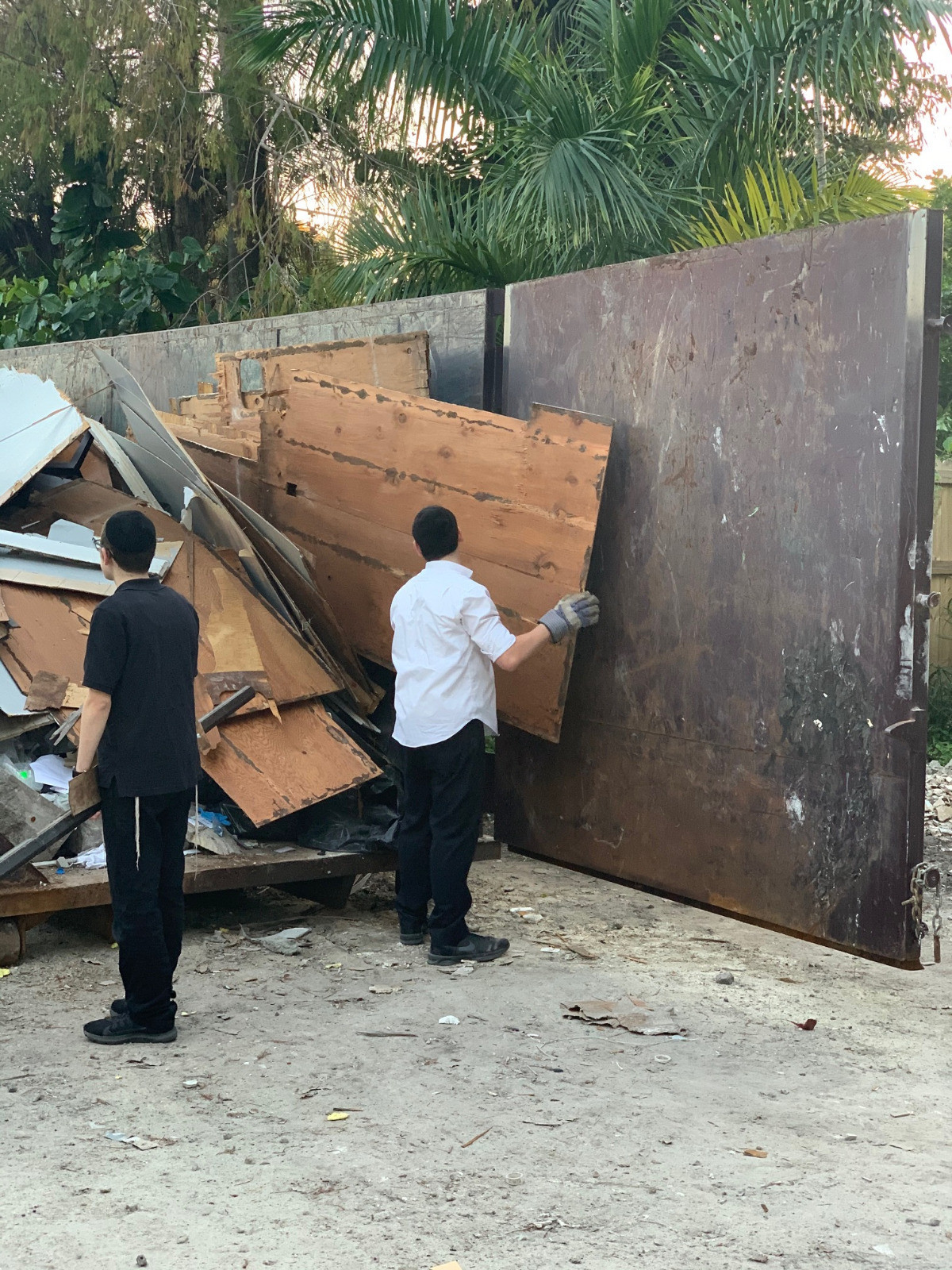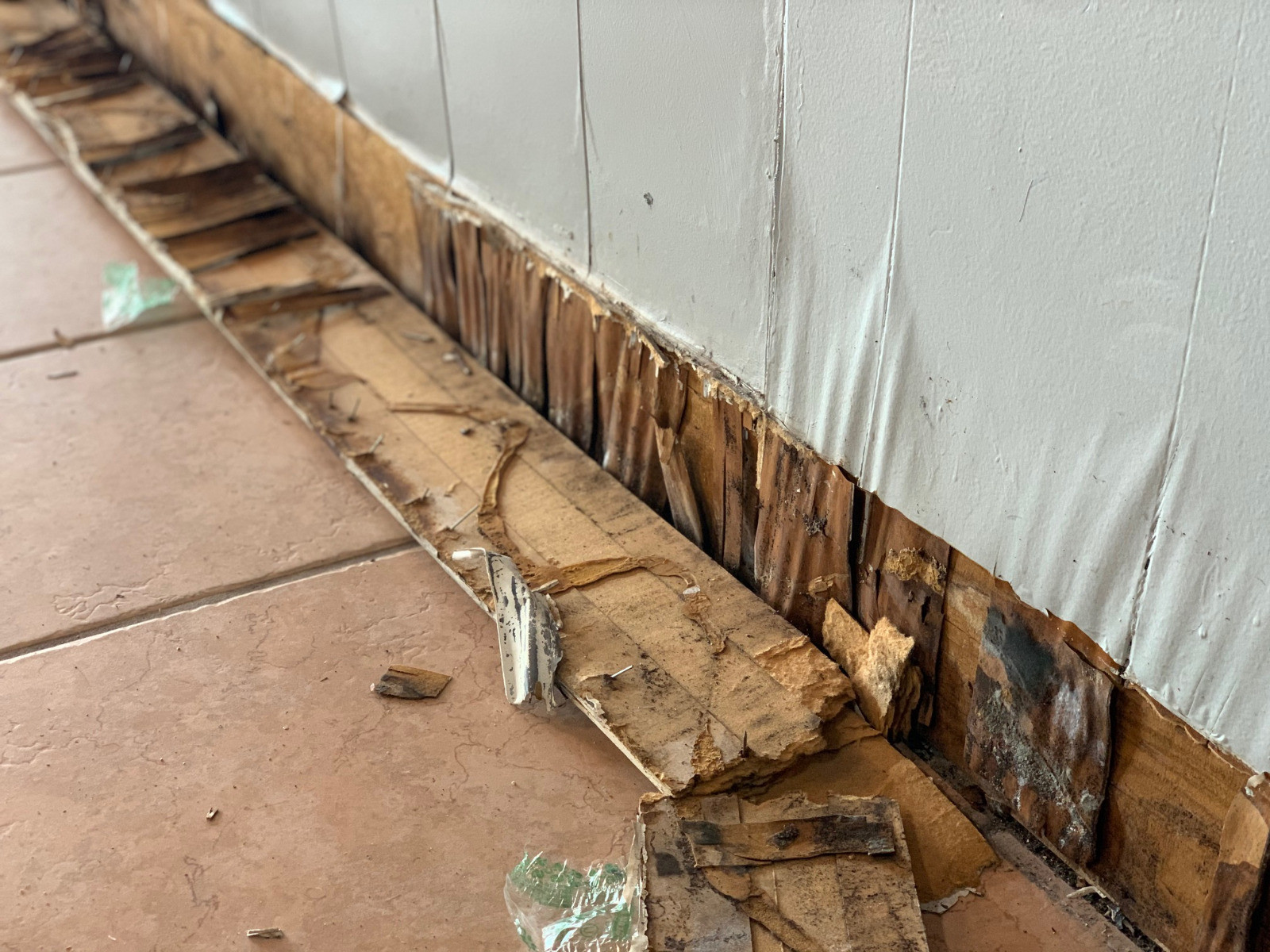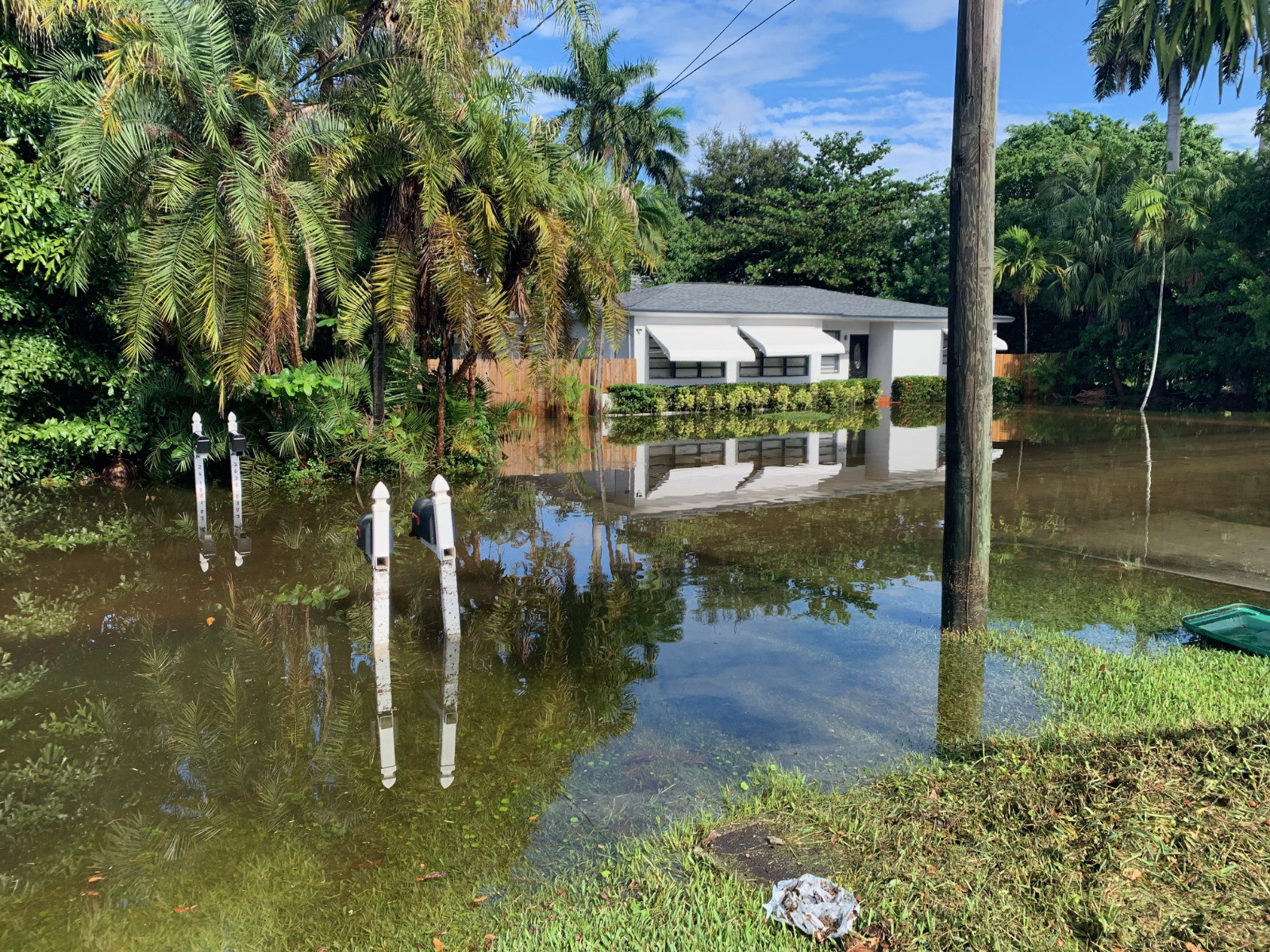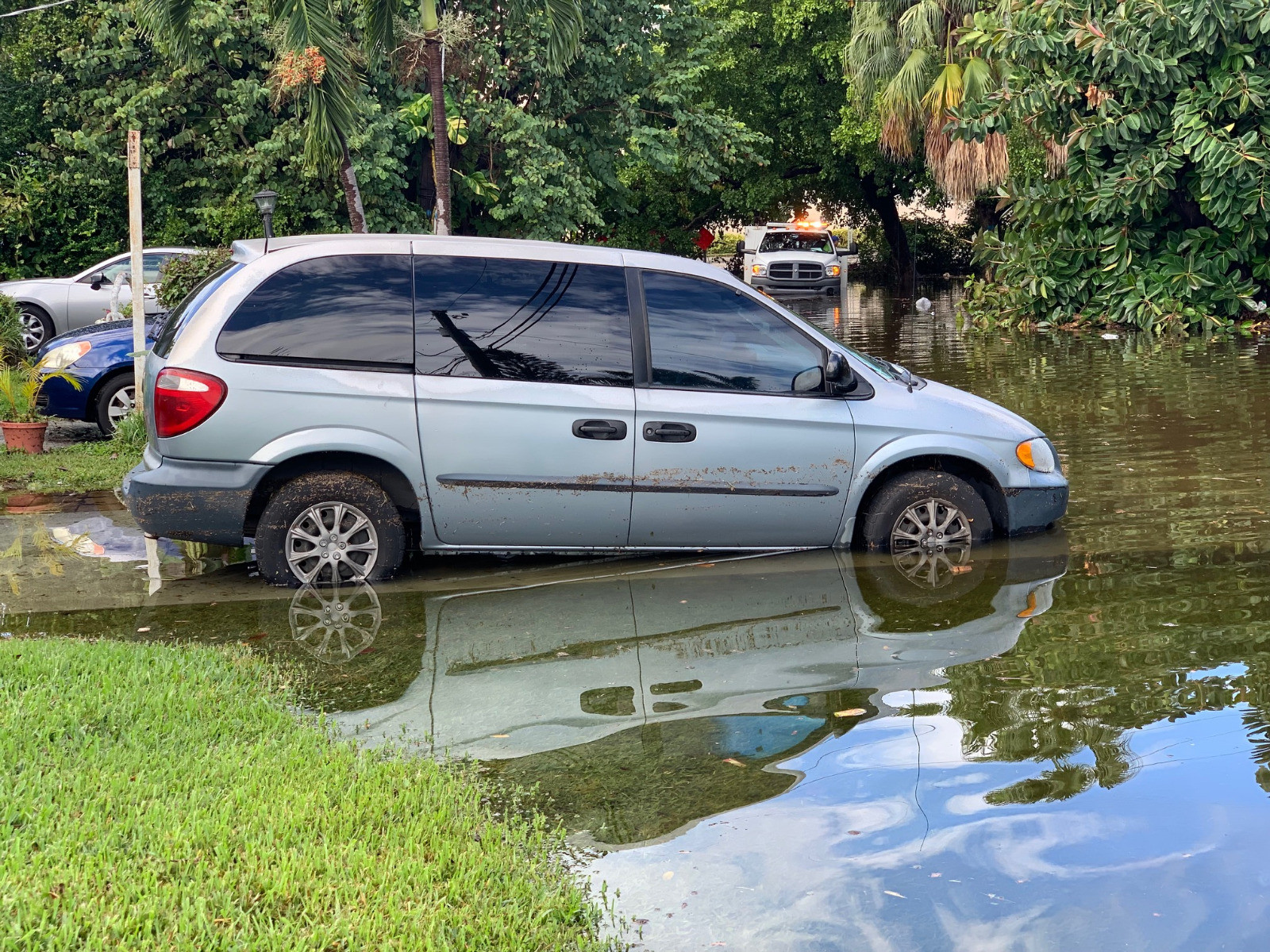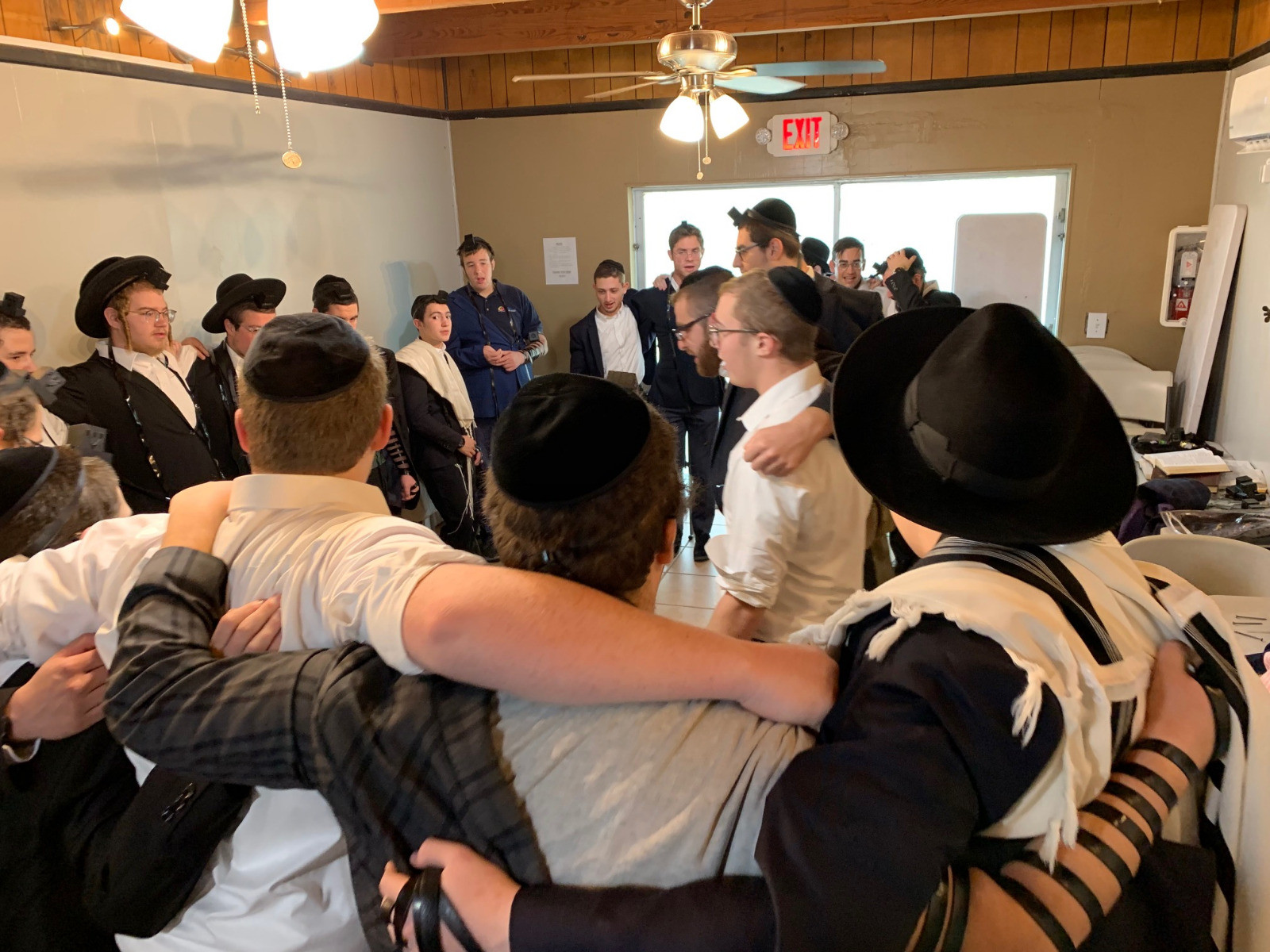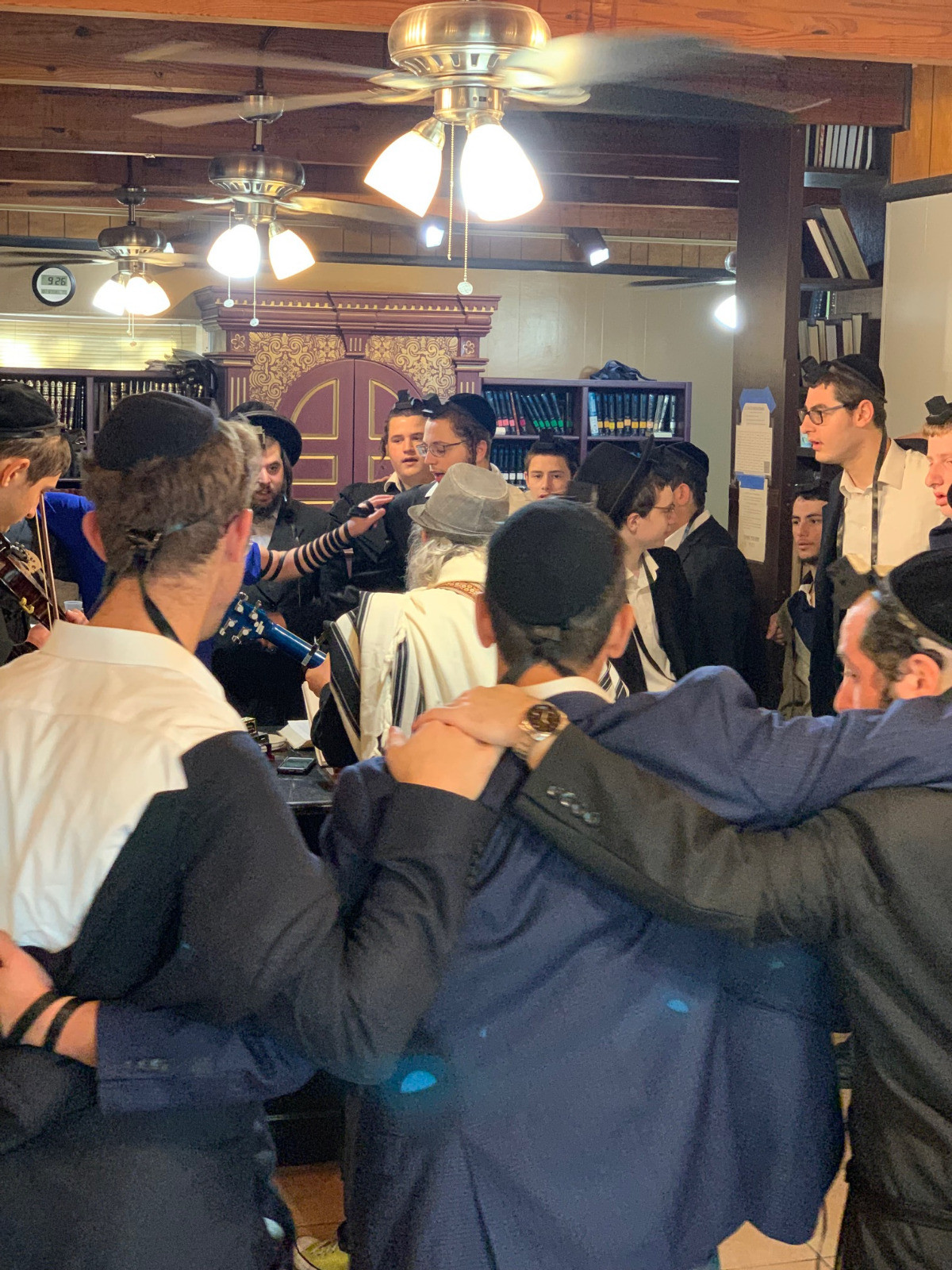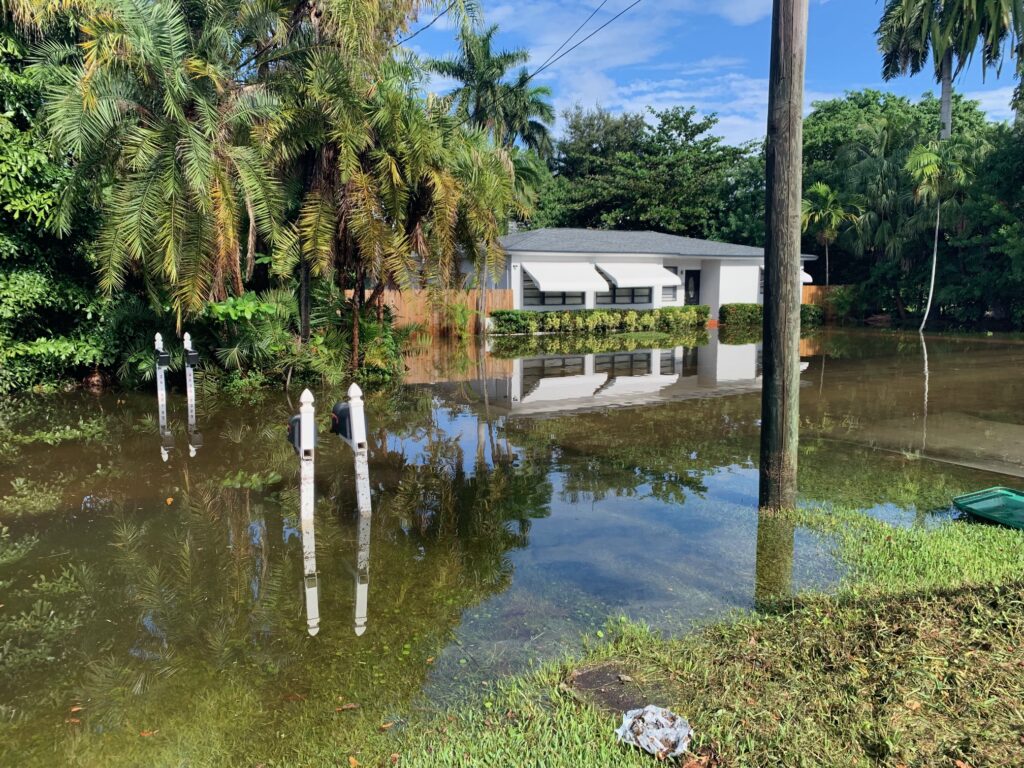After spending two months far away from home, each bochor from Yeshivas Doresh in Miami went home for Chanukah. They had travelled from as far as Switzerland, Israel, Australia and Lakewood to be in Yeshivas Doresh and they had earned this break. On December 23rd, the first morning of Chanukah, the Rosh Yeshiva awoke to hear it pouring rain outside. He looked out the window and saw that the street in front of his house was flooded. This isn’t at all a common Miami occurrence and as he drove his car through the flooded streets he was a bit calmer knowing that at least the Yeshiva bochorim were all back home for a little while. Although the Yeshiva is a short drive from his home, it took a lot longer due to the many detours he had to take to get around the water. However, as he got to the block of the Yeshiva he was shocked. The water on the block was at least waist deep or even chest deep. He got out of the car in the rain and stared at all of the cars parked in their driveways, which he knew would never be drivable again. He called a few of the staff, who thought that they had a few days of a break too and told them to look at the online cameras of the Yeshiva. What they saw shocked them. The Yeshiva vehicles were under water. They quickly looked at some of the other cameras which further confirmed their fears.
After spending the summer renovating a house to be the new dining room and commercial sized kitchen for the Yeshiva, it had feet of water in it. The ovens and commercial fridges could be seen on the cameras with water halfway up the sides. They turned on the radio to hear that the airport had been closed due to the flash flood rain. Later they would hear that many other places had been under water as well. The drainage systems simply couldn’t manage the deluge so quickly and they had backed up. With the backup, the water mixed with the sewer system and the rainwater not only was muddy, but became dangerously contaminated.
However, the real fear was the Bais Medrash and the classrooms. Without those, what would the Yeshiva come home to? The cameras stayed on for a bit longer to show that the Bais Medrash had literally become a pool. The water was above the electrical outlets throughout the building and at some point everything was fried. The computers, surveillance system, laptops, copiers, smart boards, music room with all of the equipment, keyboards, piano, drum sets, etc. were eventually lost. But the Bais Medrash with all of the Seforim and Tashmishei Kedusha were the essence of the Yeshiva and what everyone travelled there to learn. Rav Chaim Kanievsky, shlita, had paskened that the Yeshiva should duchen each day, so that the Kohanim would become comfortable with duchening. All of the talleisim had been under the Amud and were compromised from the water. The Megillahs were under water. The mantels from Rosh Hashanah were under water. Wherever the water had gotten in, would later have to be removed forever, including the Aron Kodesh, Bima, all of the bookcases, and shelves of seforim.
The Rosh Yeshiva was standing at the edge of the water and was about to wade through and down the block to the Yeshiva and as he was about to step in, strong arms pulled him away from the water. Neighbors had seen him standing there in the rain and realized what he was about to do. They had known from previous experience of similar incidents of others who waded in and had been electrocuted. They knew that ‘the Rabbi’ was the one who headed ‘the school’ and had braved other previous challenges for the sake of the nice ‘Jewish boys from far away’. They knew he’d jump right into the water and they came outside to stop him. They had first called out to him, but he hadn’t heard them yelling, so they grabbed and pulled him back.
Eventually, an electric power crew shut off the power and the water receded enough be able to wade down to the Yeshiva. The sun came out and the neighbors watched as the Rabbi carried each Torah out of the building and back up the block to safety.
There was a remediation crew vacuuming out the water from the house next door and the Rosh Yeshiva had them begin on the Yeshiva. The walls, doors, etc. were all torn out within the next few days and the items of the Yeshiva were either laid out to dry or put into the 40 yard dumpsters that kept on having to be replaced every few days. The mold and the stench was unbearable in the Miami heat. The Rosh Yeshiva remarked sadly, “In Mitzrayim, after the Plague of Frogs, they piled up and began to putrefy; we tragically have a Plague of Seforim that the flood waters have caused to do the same.”
It was decided that the smaller kitchen and dining room building could be fixed up enough to be a temporary solution for the Yeshiva to be able to return. So, when everyone returned, the dining room became a multipurpose room for meals, Tefillos, Bais Medrash, shiurim, classes, exercise, music, computer classes, etc. that also had to stretch and accommodate borrowed siddurim and chumashim, seforim, hats and jackets, tefillin, loaned musical instruments, math and English books, laptops, etc. What was thought to take a few short weeks has turned into two months so far.
Besides the overwhelming cost to rebuild, the ‘red tape paperwork’ that Miami-Dade County created in hindering the precautionary structural changes the Yeshiva wanted to implement to protect from any further flood, continued to slow any work schedule. The Yeshiva wanted to pour cement to elevate the floor and close in the garage, but continuous hurdles kept being introduced. Finally, when they passed the paperwork hurdles, the financial ones began.
FEMA, the U.S. government, is the major flood insurer and is notorious about their compensation and of not paying out fast, but when they offered a check it barely covered even the cost of the earlier remediation and tear-out. The contents were hardly covered as well. The Yeshiva decided that they must anticipate and take precautions to be prepared for the future and to use materials to weather another deluge, such as cement, metal studs, tar, GFI outlets, etc. throughout the buildings. Rabbi Mordechai Salfer, the rosh yeshiva recently remarked, “No yeshiva would have thought to have to add and anticipate a sudden tear-out and complete rebuild of a yeshiva in their budget, and neither did Yeshivas Doresh. Especially after having just renovated to move in this year.”
The Doresh bochorim have been quite understanding and accommodating and they bounced back into the regular schedule of learning and davening. This has definitely been the most accomplishing year of the past 15 years and the boys have set remarkable personal learning goals and have made numerous Siyumim and accomplishments in every area, including vocational skills such as music and computers. People visit and remark how happy everyone remains and they wonder how they are in such high spirits. However, every bochor looks each day at the shell of what once was the Bais Medrash building just a few feet away, with it’s torn out walls and wonders if they will ‘get back home’ into their Bais Medrash and classrooms. One hallmark of Yeshivas Doresh is that the bochorim are themselves held responsible to divide up the tasks and keep all of the Yeshiva clean, to prepare and serve all of the meals, as well as all of the other responsibilities. Remarkably, even under such tight quarters, this has not changed the level of how clean the place is kept each day.
Yeshivas Doresh added an official Bais Medrash program this year, called Yeshivas Eitz Chaim. Within two years, each bochor is prepared towards Semicha and a bachelors degree. Over this winter, the Eitz Chaim talmidim have almost completed Hilchos Basar B’Cholov with every Shach and Taz, under the guidance of their rebbe, Rabbi Moshe Salfer, and are preparing for a test on the entire volume. These are bochorim who did not find much success in the past and have challenged themselves to grow and become accomplished in Yeshivas Doresh and Eitz Chaim. They are role models in perseverance and getting over life hurdles. They have become beacons of what a bochor can become and they keep seeking further opportunities to grow in. One bochor commented, “Throughout the past few months, as a result of the additional challenges created by the Flood, the Eitz guys have stepped up the intensity of our learning and we realize that must be the role models for the rest of the Yeshiva.”
Rabbi Salfer has turned to asking directly for items that are necessary for the rebuilding of Yeshivas Doresh:
“All of the bochorim remain all day in the 20’ X 30’ Dining Room. Our real home is a shell of a building only a few feet away. We need stucco, cement, drywall, nails, windows, doors, wire, lighting, etc., besides all of the seforim, bookcases, Aron Kodesh, talleisim, etc. computers, freezer, etc. which were destroyed. Please don’t abandon us!
There are many sponsorships and dedications available. We are literally starting all over from the beginning!”
In the Mishkan, each person contributed and sponsored what they felt moved to provide. Partner through what you are moved to help supply; anywhere from a Shiur Room ($15,000), Kohanim Washing Station ($12,500), Impact Window in the Bais Medrash ($1,500), Bookcase ($1,000), Exterior Door ($450), Mezuzah ($300), Table in the Bais Medrash ($250), Talis, Set of Sefarim, Light Fixture ($180) or a GFI Electrical Outlet ($100).
For additional information about the Yeshiva, to make a donation, or to inquire about other specific dedication opportunities please call (305) 705-2211
Watch the moving two-minute video about the Flood:
Or the moving two-minute movie about the Yeshiva:
All dedications will appear on a plaque in the Yeshiva lobby, as well as in a volume of a set of Shas. All donations are U.S. Tax Deductible. 